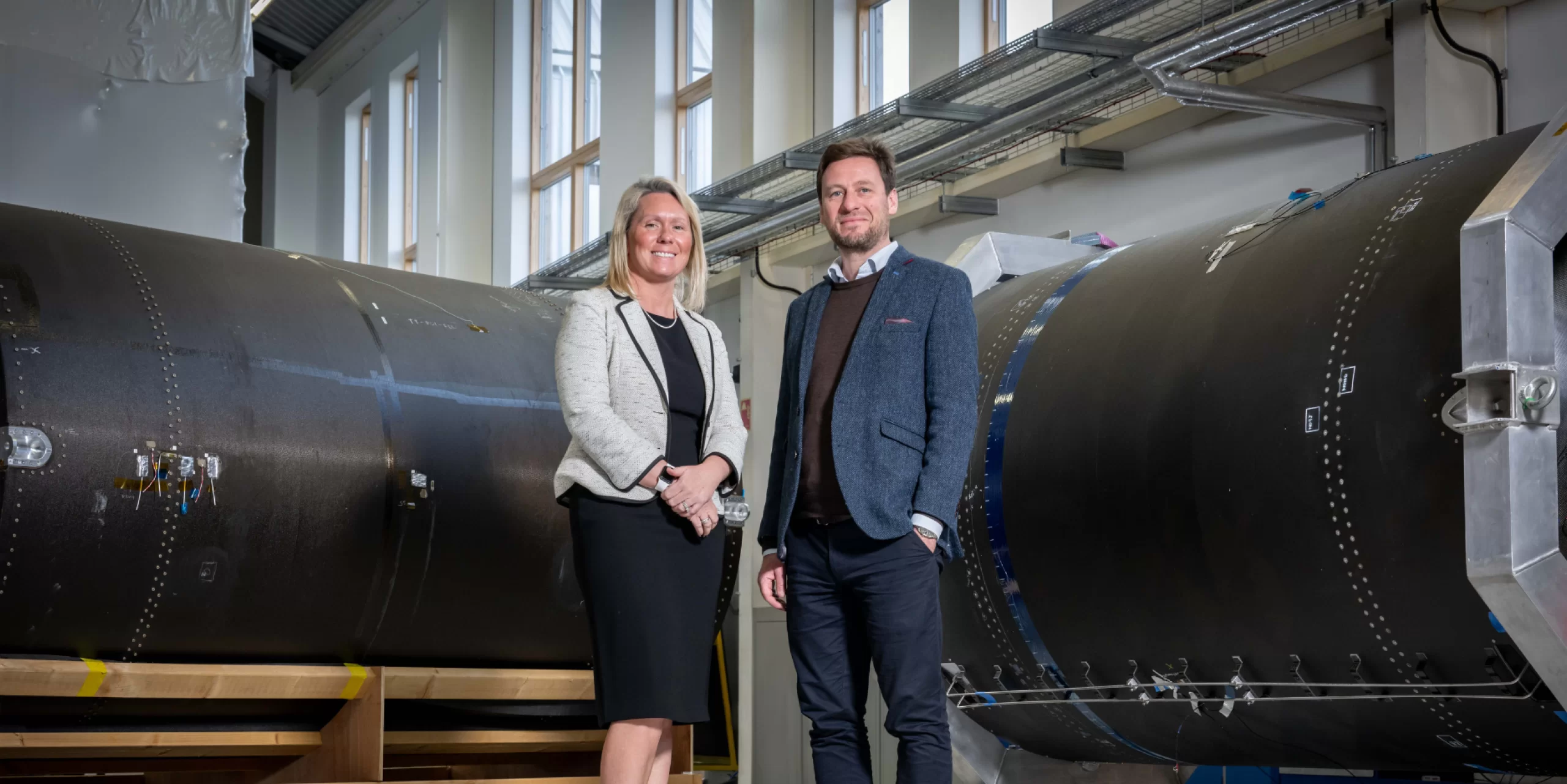Orbex Lands £16.7M to Advance UK Space Ambitions with 3D Printed Rocket
As UK spacecraft manufacturer Orbex navigates the complexities of rocket development, a new £16.7 million ($20.7 million) investment could provide a crucial boost. This latest funding round reinvigorates the company’s efforts to debut its Prime rocket, a small payload launch vehicle designed to transport satellites into low Earth orbit (LEO). Despite several delays, Prime remains a central part of the UK’s ambitions to establish itself as a significant player in the global space industry, striving to capitalize on the growing demand for satellite launches.
The Scottish National Investment Bank led the funding, contributing a substantial £10.5 million ($12.9 million). Venture capital firms Octopus Ventures, BGF Ventures, Heartcore Capital, the Export and Investment Fund of Denmark (EIFO), and various corporate and angel investors also provided additional support. With this latest funding, Orbex’s total raised now stands at £108.7 million ($134.5 million) over six rounds.

Nicola Douglas, Executive Director of Innovation at the Scottish National Investment Bank, and Orbex CEO Phillip Chambers. Image courtesy of Orbex.
Orbex’s incursion into space is driven by its 19-metre-tall Prime rocket. What makes this rocket quite unique is its reliance on renewable biofuel, slashing carbon emissions drastically. Considering the environmental footprint of spaceflight, Orbex has decided to prioritize sustainability.
However, Orbex’s focus on sustainability goes beyond just using cleaner fuel, impacting how they make their rockets. The company uses advanced technologies like 3D printing, improving accuracy and speed while reducing waste. This approach is evident in how Orbex builds several parts of its rocket.
For example, the Prime rocket’s engines showcase this innovative approach. Each is crafted from a single piece using an AMCM M4K 3D printer. This method eliminates the need for welds, bolts, or flanges, reducing potential failure points and material waste. Orbex also uses 3D printing for most propulsion subsystems and the structural components of the rocket, including its tanks and mainframe. These are constructed using advanced carbon fiber materials, which offer superior strength at a fraction of the weight of traditional materials and are crucial for maintaining the low mass needed for spaceflight. Furthermore, the in-house production capabilities allow for rapid prototyping and modifications, essential in a field where every gram and every second count.
With the new funding, Orbex aims to ramp up its resources, which may also mean expanding its 3D printing facilities. The company’s CEO, Phillip Chambers, emphasized the significance of this phase in Orbex’s growth.
“Orbex is one of only two space rocket manufacturers in the UK, and the only one to also operate its own spaceport. Our technology is pivotal in making the UK a hub for European orbital launches, and we are entering a critical phase of development. We are building a sustainable, cost-effective launch vehicle to compete with the best of Europe’s spaceflight manufacturers. This additional funding will support our goal to push on into an operational launch phase and scale our business when the time comes,” pointed out Chambers.
In January, Orbex strengthened its leadership team by bringing in Chambers as CEO and Miguel Belló Mora, former Director General of the Spanish Space Agency, as Executive Chairman. Before joining Orbex, Chambers co-founded and led Peakon, an employee engagement platform that he sold to Workday for $700 million in 2021. After stepping into his new role, Chambers said his job would be to take Orbex “from startup to scale up.” Luckily, he has a lot of experience with that. The executive, showing his commitment to Orbex’s future, also invested personally during the company’s £40 million ($49.5 million) Series C funding round in 2022.
Orbex’s strategic developments are not just shaping the future of the UK’s space launches but also significantly impacting Scotland’s economic landscape. The Space Hub Sutherland, located near Melness on Scotland’s northern coast, is expected to become a key site for Orbex’s launches. Managed by Orbex, it is set to be the world’s first carbon-neutral spaceport. With the spaceport’s development, an estimated £1 billion ($1.2 billion) boost to the Highlands and Islands economy is anticipated over the next three decades.
Construction at Sutherland Spaceport began in April 2023 and has since achieved several key milestones, including the creation of the bellmouth at the site and improvements to 17 local passing places. Current efforts are focused on developing the access road and car park. However, Sutherland Spaceport is still awaiting its operational license, unlike the other two UK-licensed spaceports: Newquay in Cornwall, which hosted Virgin Orbit’s failed launch attempt in 2022, and SaxaVord, which officially became western Europe’s first licensed spaceport for vertical rocket launches.
Commenting on the latest investment, the Scottish National Investment Bank’s Executive Director of Innovation, Nicola Douglas, said, “The Bank recognizes the unique potential the space industry offers for Scotland. We are perfectly placed to leverage our geographical location, vibrant business and innovation landscape, and skilled workers to be one of the most significant global players in this growing industry. At the Bank, we have been particularly drawn to Orbex’s commitment to sustainability through its use of renewable biofuel and launch technology, all working towards the goal of carbon neutrality. Its approach perfectly aligns with our net zero and innovation missions. This follow-on investment comes at an exciting time as Orbex expands its manufacturing and looks to complete its Sutherland Spaceport this year.”
EIFO’s Chief Investment Officer (CIO), Erik Balck Sørensen, also pointed out that, once operational, Orbex will provide the European Union with autonomous space launch capabilities. Both the rocket and spaceport will add a new UK hub for space launches.
Subscribe to Our Email Newsletter
Stay up-to-date on all the latest news from the 3D printing industry and receive information and offers from third party vendors.
Print Services
Upload your 3D Models and get them printed quickly and efficiently.
You May Also Like
Stifel’s AM Forward Fund Launches, Looking for US Manufacturers to Invest In
The need for greater resiliency in the defense supply chain is real and urgent. One area the US government has been focusing on is building a faster and more sustainable...
3D Printing Financials: Xometry Cuts Losses, Grows Platform
Xometry (Nasdaq: XMTR) is entering 2025 with momentum. The company delivered record quarterly revenue and narrowed its losses, showing progress toward profitability. More importantly, for those watching the future of...
3D Spark Secures $2.2M to Tackle Manufacturing Bottlenecks
German startup 3D Spark has raised two million euros in a seed round. Swedish software investor Triplefair Partners led the round, with Fraunhofer Technologie-Transfer Fonds (FTTF) and Innovationsstarter Fonds Hamburg...
3D Printing Financials: Protolabs Reports 3D Printing Dip, But Metal 3D Orders Grow
Protolabs (NYSE: PRLB) kicked off 2025 with a mixed but steady performance. Revenue remained close to expectations, profits dipped slightly from last year, and the company was profitable despite ongoing...






























